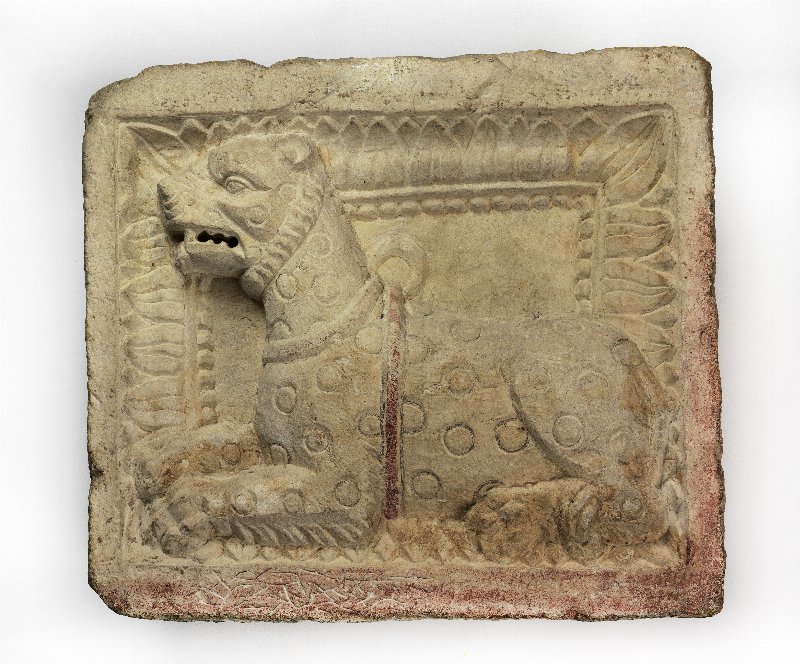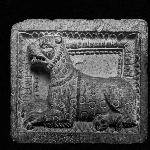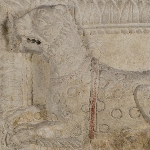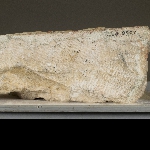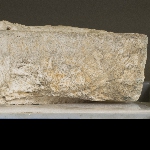| Object Number | B8907 |
| Current Location | Collections Storage |
| Culture | Roman |
| Provenience | Syria | Palmyra |
| Section | Near Eastern |
| Materials | Limestone | Pigment |
| Iconography | Leopard | Floral Motif |
| Description | CBS Register: Rectangular slab in limestone, mortuary stone. In relief, leopard resting looking towards left. In frame of floral designs. Red color partly preserved. Romano: "Square plaque with relief representation of couchant spotted feline in profile to the left. Spots represented as incised circles on body, neck, and face. Feline is snarling with mouth open with sharp teeth represented with drill holes cut through the mouth. Snub nose with incisions for wrinkles; wrinkles beside eyebrow. Carefully executed eye with a depressed circular iris. Small rounded ear turned back. Long neck and compact body. Around the upper neck is a ruff of thick curls represented with vertical gouges. Ring projects from top of back with two straps looped through, one around lower neck and one around the abdomen. Powerful claws resting on molding in front. Tail looped around hind leg with strands of hair on end of tail resting on side of foot. Flat frame around perimeter with incised false inscription (?) on lower frame. Inside of frame is a leaf and dart and bead pattern on a molding. Red pigment on strap around neck and across abdomen and on lower and right frame. Black pigment in incised circles on body and neck." Fowlkes-Childs & Seymour: "A small group of relief plaques from Palmyra feature crouching felines and seated humped bulls (zebu) inside frames of beading and leaf-and-dart ornament. Their significance and original contexts were probably religious, although none have secure findspots. The spotted feline on this relief is most likely a cheetah, since its claws appear to be nonretractable; a hunting leopard is another possibility. Alert and snarling, with sharp teeth visible in its open mouth, the animal is in profile facing left with straps looping around its neck, through a ring, and under its belly. Some traces of black pigment appear in the incised circles that form the spots. Red pigment remains on one of the straps as well as on part of the fame. The ring and straps could indicate simply that the cheetah, popular as hunting game, is in captivity. Alternatively, the straps could suggest that the animal represents the harnessed mount for a Palmyrene divinity: a relief dedicated to the god Malku shows a deity in a chariot drawn by spotted felines, and the god Malakbel is depicted in a chariot drawn by griffins." |
| Height | 35 cm |
| Width | 40 cm |
| Depth | 16 cm |
| Credit Line | Babylonian Expedition to Nippur II, 1890 |
| Other Number | CBS8907 - Other Number | P263724 - CDLI Number |
Report problems and issues to digitalmedia@pennmuseum.org.


